.jpg )
IT WASN’T long ago that the Nissan Navara was the perennial bridesmaid in the hard-fought sales of dual-cab utes.
Far from a negative, running second to the dominant Toyota Hilux was no bad thing – and helped reinforce Nissan as an off-road powerhouse nicely. But a few years of brutal competition and some missteps has seen the latest generation Navara drop off the radar for many Australian ute buyers.
Since the arrival of the current D23 model – a truck briefly marketed as the NP300 – the Navara has been playing catch-up, something Nissan is (understandably) not comfortable with. It explains why we’re standing in a dry, dusty picnic area not far from Bendigo north-west of Melbourne.
 A Y61 Patrol is perched on a car trailer, ready to act as ballast. There’s a decent smattering of tools on hand and there are trays of lead weights under a gum tree in what resembles a roving workshop flanked by enthusiasts testing the mettle of their rigs.
A Y61 Patrol is perched on a car trailer, ready to act as ballast. There’s a decent smattering of tools on hand and there are trays of lead weights under a gum tree in what resembles a roving workshop flanked by enthusiasts testing the mettle of their rigs.
Except that instead of enthusiasts, the people on the ground are senior Nissan product planners and engineers. They include Takahiro Nojiri, the Japanese-based man now in charge of the Navara program. There’s also the man tasked with digesting the requirements of individual markets, Hajime Tanaka.
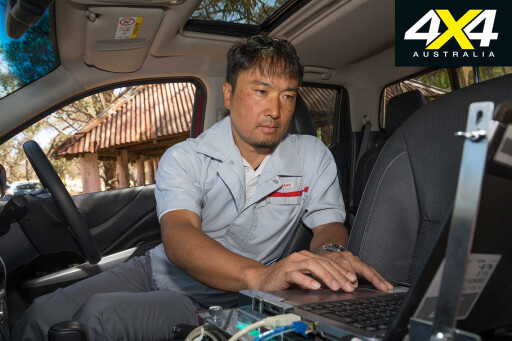 “At first not many people in Nissan Japan realised ... what the uniqueness here is,” he said, something he expressed strongly enough to convince HQ to send a delegation Down Under. Their mission: return the Navara to its former glory. Local product manager John Kil acknowledges what 4X4 Australia readers have long known: that the rear coil suspension to date hasn’t been up to the punishment and load-lugging ability of key rivals, all of which use a leaf-sprung rear (at least, until the arrival of the Mercedes-Benz X-Class).
“At first not many people in Nissan Japan realised ... what the uniqueness here is,” he said, something he expressed strongly enough to convince HQ to send a delegation Down Under. Their mission: return the Navara to its former glory. Local product manager John Kil acknowledges what 4X4 Australia readers have long known: that the rear coil suspension to date hasn’t been up to the punishment and load-lugging ability of key rivals, all of which use a leaf-sprung rear (at least, until the arrival of the Mercedes-Benz X-Class).
“As part of the overall continuous improvement of the vehicle, we’re trying to address that feedback and we also wanted to improve the ride and handling,” says Kil, explaining that our surroundings in central Victoria were chosen for their steep pinches, sweeping bends, fast gravel and dips and dives. All the sorts of things so many ute drivers experience daily.
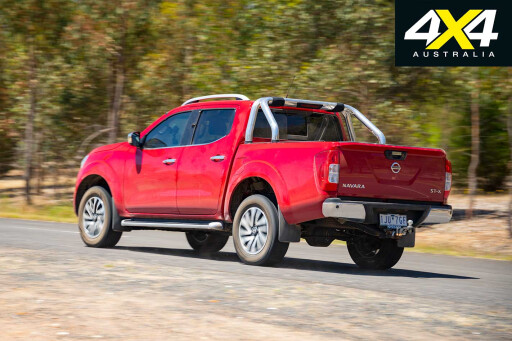 Discussions about the Navara update began early in 2017 – two months before Nissan had unleashed the first update to the D23, one aimed at quelling those issues with carrying a load. For this tweak – which improves the dual-cab SL, ST and ST-X models (the base RX is unchanged) – there could logically have been a temptation to switch to the leaf sprung rear end used in some D23 variants.
Discussions about the Navara update began early in 2017 – two months before Nissan had unleashed the first update to the D23, one aimed at quelling those issues with carrying a load. For this tweak – which improves the dual-cab SL, ST and ST-X models (the base RX is unchanged) – there could logically have been a temptation to switch to the leaf sprung rear end used in some D23 variants.
However, engineers don’t like admitting defeat. And Kil says there has been plenty of positive feedback from the growing number of “dual-purpose” customers who use a ute for work and play. “Most of the time they’re not using more than, say, 400-500kg in the back. For those customers, Navara has actually been really positive.”
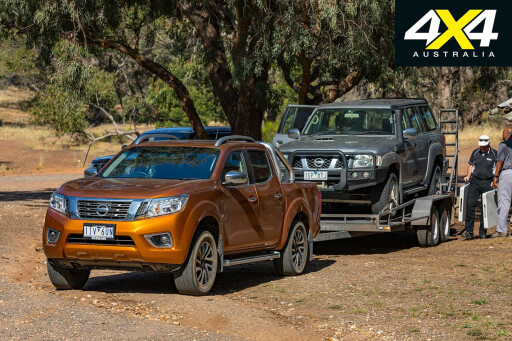 Those more supple and better controlled coils work nicely with nothing in the tray. Besides, despite the waves of discontent when doing utey things with a laden coil sprung Navara, engineers are all about finding solutions to problems. Nissan was confident it could maintain the respectable on-road prowess of the Navara, but with newfound control.
Those more supple and better controlled coils work nicely with nothing in the tray. Besides, despite the waves of discontent when doing utey things with a laden coil sprung Navara, engineers are all about finding solutions to problems. Nissan was confident it could maintain the respectable on-road prowess of the Navara, but with newfound control.
The solution was new dual-pitch coils. Instead of a coil with uniform spacing between each twist, the coil is twisted in two different distances at either end, something unique in its class. The idea is to allow a supple ride when unladen – many people drive their dual-cab utes without much in the tray – but allowing for more muscle with close to a tonne in the tray. Towing, too, was a big issue that needed attention for the new model.
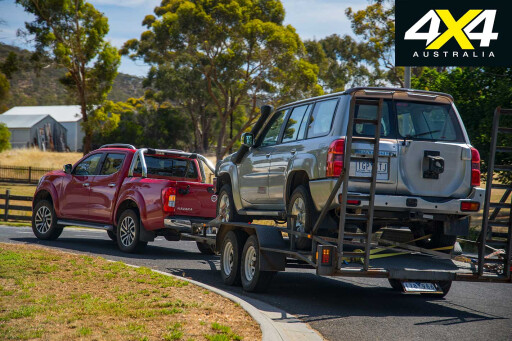 The Navara’s unchanged 2.3-litre twin-turbo diesel has no issues dragging around up to 3.5 tonnes – its 450Nm is eminently accessible – but the lack of control in the car’s rear-end didn’t always instil confidence. Teaming with the new rear coils is a new rebound damper to better control the movement, particularly when working. And the rear suspension has been tuned to match the additional control and movement of the rear, with the aim of leading to a more cohesive feeling.
The Navara’s unchanged 2.3-litre twin-turbo diesel has no issues dragging around up to 3.5 tonnes – its 450Nm is eminently accessible – but the lack of control in the car’s rear-end didn’t always instil confidence. Teaming with the new rear coils is a new rebound damper to better control the movement, particularly when working. And the rear suspension has been tuned to match the additional control and movement of the rear, with the aim of leading to a more cohesive feeling.
Our first experience comes with the car unladen. Even better, there’s one of the old (2017 model) Navaras for comparison; back-to-back on the same roads. In terms of body control there’s not a significant difference in the way the updated Navara deals with a pockmarked backroad. It still jiggles and occasionally bucks over a larger bump.
Instead, it’s the steering that displays the biggest improvement. The ratio has been tightened from 4.1 turns lock to lock to about 3.4. No longer do you need to be twirling the tiller like a forklift driver in a tight squeeze. It’s also been lightened, making for an altogether more pleasant machine, especially when the road gets windy or when manoeuvring at low speeds.

Before turning a wheel there are clear improvements; whereas D23 Series II is sagging in the tail, its rear-end succumbing to the weight, the latest version is retaining its composure.
On the road, too, there’s a stark improvement. In the old Navara the rear-end lacks control over bumps, floating and occasionally reaching the limits of its suspension travel. The new one not only sits flatter but disposes of imperfections – particularly big ones – with conviction. In a third-time-lucky sorta way, Nissan finally has the coil spring Navara doing a decent job of carrying loads.
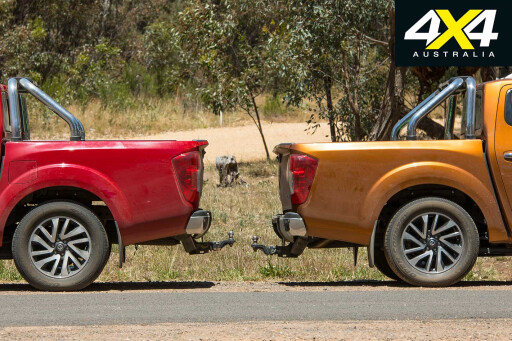 Towing, too, is more controlled in the rear, the trailer more in sync with the movement of the car. However, unlike the load test, the improvements with 3.5 tonnes on a trailer are more incremental rather than revolutionary.
Towing, too, is more controlled in the rear, the trailer more in sync with the movement of the car. However, unlike the load test, the improvements with 3.5 tonnes on a trailer are more incremental rather than revolutionary.
Elsewhere, the Navara is largely unchanged. The four-cylinder diesel is a hearty powertrain and one that musters its torquey best low in its rev range, for easy accessibility, and the seven-speed auto shifts faithfully, it’s well-spaced ratios assisting in the whole forward motion equation. All of which gets no black marks from us.
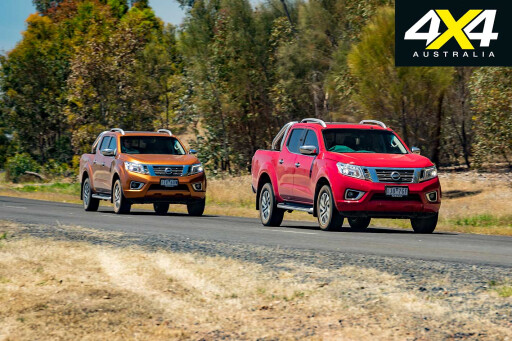 Nissan has attacked the area that really needed fixing: how the Navara drove when it was called on to do things ute drivers all over the country do regularly. That it manages to hit its target while retaining decent – if not outstanding – on-road manners makes this improvement all the more worthy.
Nissan has attacked the area that really needed fixing: how the Navara drove when it was called on to do things ute drivers all over the country do regularly. That it manages to hit its target while retaining decent – if not outstanding – on-road manners makes this improvement all the more worthy.
The suspension changes haven’t revolutionised the Navara, but they’ve brought welcome evolution that makes it better for towing and carrying a load, something that should directly improve its off-road touring capability.
2018 NISSAN NAVARA ST-X SPECS:
Engine: 4cyl twin turbo-diesel
Capacity: 2.3-litres
Max Power: 140kW at 3750rpm
Max Torque: 450Nm at 1500-2500rpm
Gearbox: Seven-speed auto
Crawl ratio: 44.6:1
4X4 System: Dual-range part-time
Construction: Separate chassis
Front suspension: Independent/coil springs
Rear suspension: Live axle/coil springs
Wheel and tyre spec: 18-inch alloys, 255/60
Kerb Weight: 1969kg
GVM: 2910kg
Payload: 941kg
Towing capacity: 3500kg
Seating capacity: 5
Fuel tank capacity: 80 litres
ADR fuel consumption*: 7.0L/100km
On-test fuel consumption: N/A
Departure angle: 28.2˚
Rampover angle: 24.7˚
Approach angle: 33.2˚
Wading depth: 600mm
Ground Clearance: 228mm
*Australian Design Rule ‘Combined-Cycle’ claim

COMMENTS